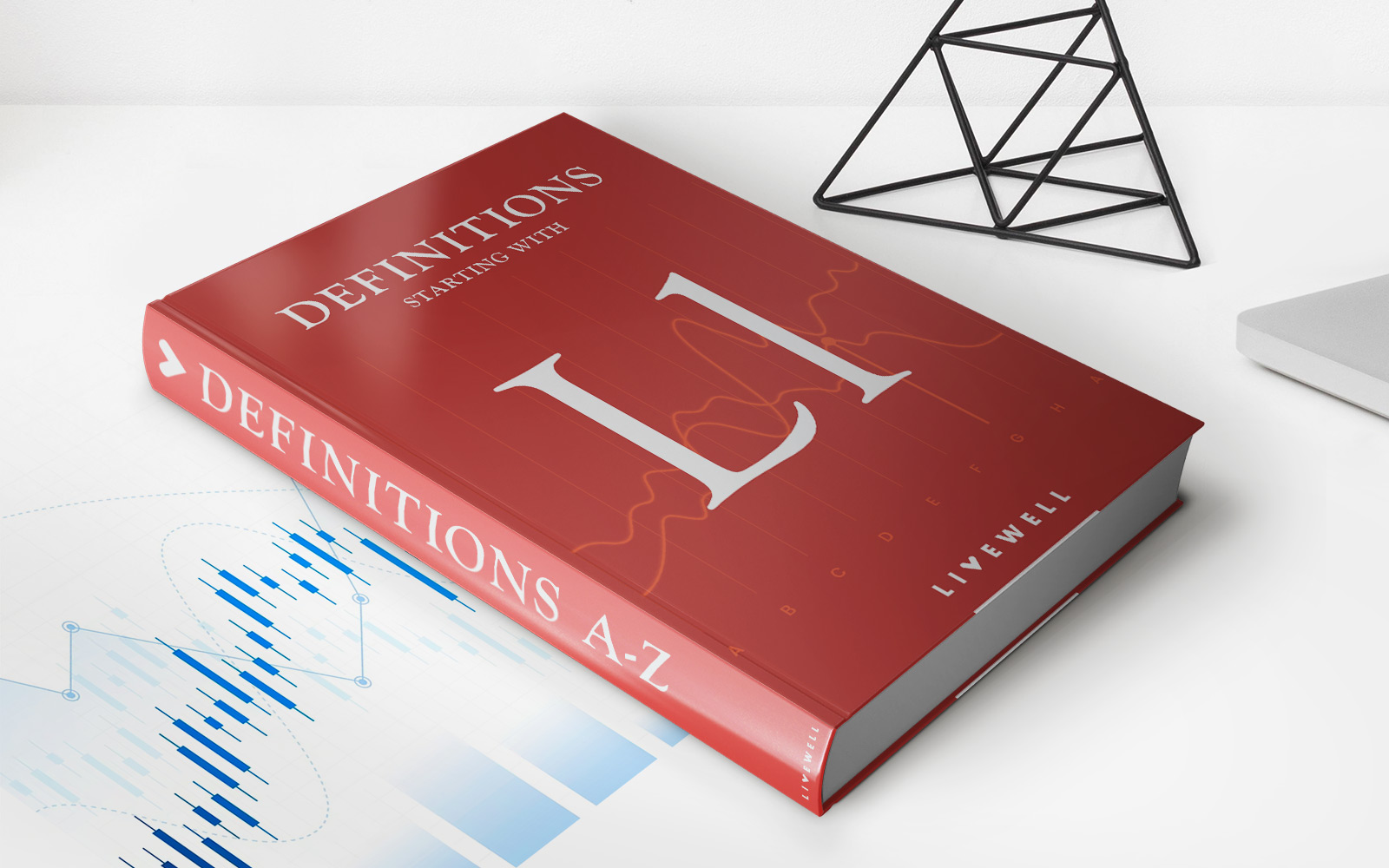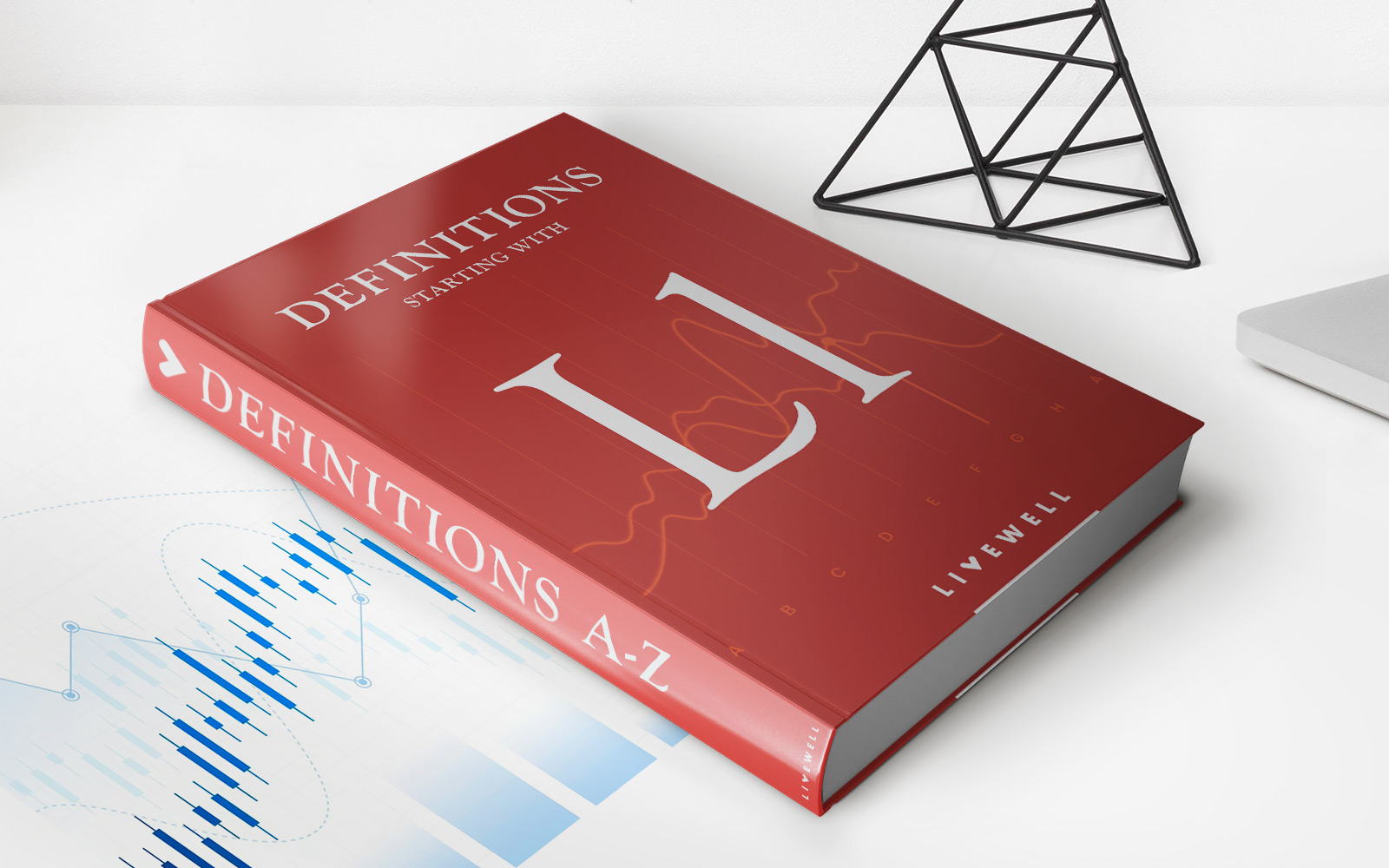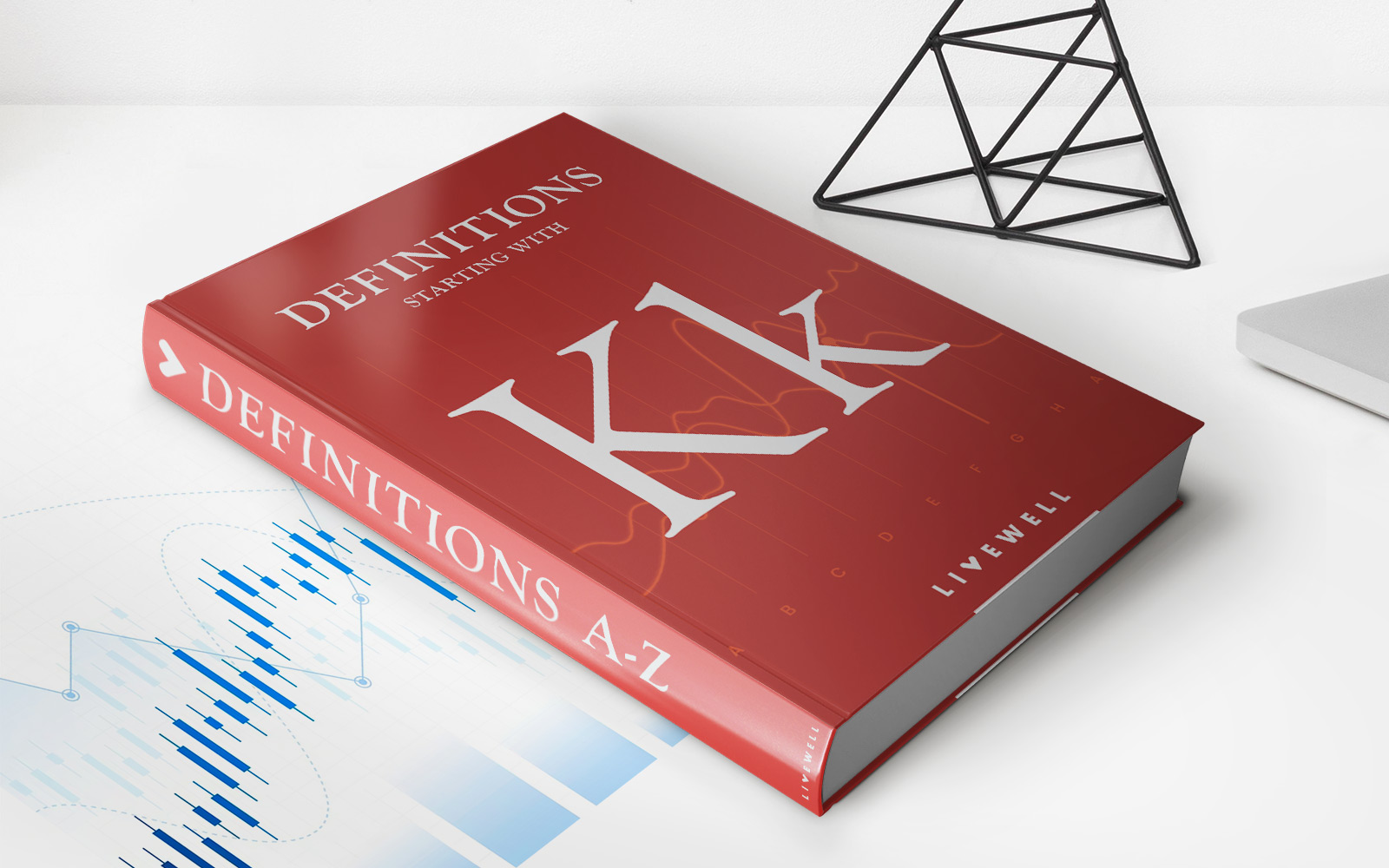

Finance
What Is A Settlement Option In Life Insurance?
Published: October 16, 2023
Learn about settlement options in life insurance and how they can provide financial security for your loved ones. Find out how these options can help you manage your finances and plan for the future.
(Many of the links in this article redirect to a specific reviewed product. Your purchase of these products through affiliate links helps to generate commission for LiveWell, at no extra cost. Learn more)
Table of Contents
Introduction
In the world of life insurance, there are various options available to policyholders when it comes to receiving the benefits of a policy. One such option is the settlement option, which allows policyholders to choose how they want to receive the proceeds from their life insurance policy. A settlement option can provide financial security and flexibility for beneficiaries, ensuring that the policy benefits are utilized in a way that aligns with their needs.
A settlement option refers to the method through which a life insurance policy’s death benefit is paid out to the beneficiaries. Instead of receiving a lump sum payment, policyholders have the option to receive the benefits in installment payments, which can be structured based on their unique preferences and financial goals. This flexibility allows beneficiaries to manage the funds wisely, ensuring long-term financial stability.
It is important to note that the settlement option is typically chosen by the policyholder when initially setting up the life insurance policy. However, beneficiaries may also have the option to select or modify the settlement option after the policyholder’s passing, depending on the terms and conditions of the policy.
Choosing the right settlement option is crucial, as it can have a significant impact on the financial well-being of the beneficiaries. In the following sections, we will explore the different types of settlement options available, their advantages, and factors to consider when selecting the most suitable option.
Definition of Settlement Option
A settlement option in life insurance refers to the method by which the policyholder or beneficiaries receive the death benefit of the policy. Instead of a one-time lump sum payment, the settlement option allows for the payout to be structured in different ways, providing flexibility and tailored financial management.
Settlement options are designed to meet the unique needs and circumstances of the beneficiaries. Each option offers its own benefits and considerations, allowing beneficiaries to choose the approach that best aligns with their financial goals.
It is important to note that the availability of settlement options may vary depending on the specific life insurance policy and the insurance provider. Therefore, it is advisable to thoroughly review the policy documents and consult with the insurance company to understand the available settlement options and their terms.
When selecting a settlement option, it is essential to consider factors such as the financial needs of beneficiaries, their capacity for managing funds, and their long-term financial goals. By carefully evaluating these factors, policyholders and beneficiaries can make an informed decision about the most suitable settlement option for their unique circumstances.
It’s crucial to note that while the settlement option allows for flexibility in receiving the death benefit, it is essential to comply with tax regulations and seek professional financial advice to ensure that the chosen option aligns with applicable laws and meets the beneficiaries’ overall financial objectives.
In the next sections, we will explore the various types of settlement options available in life insurance, including lump sum payment, life income option, fixed period option, interest-only option, and joint and survivor option. Understanding these options will provide a comprehensive understanding of the choices available and help in making an informed decision.
Types of Settlement Options
When it comes to choosing a settlement option for a life insurance policy, there are several options available to policyholders and beneficiaries. Each option offers its own unique features and benefits, allowing for flexibility in receiving the death benefit. Let’s explore some of the most common types of settlement options:
- Lump Sum Payment: The lump sum payment option is the most straightforward settlement option. With this option, the entire death benefit of the life insurance policy is paid out in a single, one-time sum. This provides beneficiaries with immediate access to a significant amount of money, which they can use for various purposes, such as covering funeral expenses, paying off debts, or investing for the future.
- Life Income Option: The life income option provides beneficiaries with a regular income for the duration of their lives. The death benefit is invested, and beneficiaries receive periodic payments, similar to an annuity. These payments can be structured to provide a stable income stream for beneficiaries, ensuring long-term financial security.
- Fixed Period Option: With the fixed period option, the death benefit is paid out to beneficiaries over a predetermined period of time, such as 10, 15, or 20 years. This ensures that the beneficiaries receive a steady stream of income for the specified period, which can be particularly beneficial for individuals who have specific financial goals or obligations during that time frame.
- Interest Only Option: In the interest-only option, the insurance company retains the death benefit and pays the beneficiaries only the interest earned on that amount. This allows for the preservation of the principal amount, while beneficiaries receive a consistent income from the interest generated.
- Joint and Survivor Option: The joint and survivor option is designed for couples or business partners. With this option, both individuals are named as beneficiaries, and upon the death of one, the remaining beneficiary continues to receive the regular payments for the duration of their life.
These are just a few examples of the settlement options available in life insurance. It’s important to note that the availability of these options may vary depending on the insurance provider and the specific policy. Policyholders and beneficiaries should carefully review the terms and conditions of the policy, and if necessary, seek guidance from the insurance company or a financial advisor to select the most suitable settlement option for their unique needs.
Lump Sum Payment
One of the most common settlement options in life insurance is the lump sum payment. With this option, beneficiaries receive the entire death benefit of the policy in a single, one-time sum. This provides them with immediate access to a substantial amount of money.
Receiving a lump sum payment can offer several advantages to the beneficiaries. Firstly, it provides financial flexibility and freedom. The beneficiaries have the freedom to allocate the funds as they see fit, whether it is to cover immediate expenses, pay off debts, invest for the future, or fulfill any other financial obligations.
Furthermore, a lump sum payment can be particularly helpful in times of financial crisis or emergency. It provides a safety net to the beneficiaries, offering them a financial cushion during difficult times. They can use the funds to handle unexpected medical expenses, home repairs, or other unforeseen circumstances.
Additionally, a lump sum payment allows for potential investment opportunities. Beneficiaries can choose to invest the funds in avenues that offer growth and generate income, such as stocks, real estate, or businesses. This can potentially yield significant returns and contribute to long-term financial well-being.
However, it is crucial for beneficiaries to exercise caution when managing a lump sum payment. Without proper financial planning and guidance, there is a risk of misusing or depleting the funds quickly. It is advisable for beneficiaries to consult with a financial advisor to create a comprehensive financial plan that aligns with their goals and priorities.
It is important to note that the lump sum payment option may be subject to taxation. Depending on the jurisdiction and the specific circumstances of the beneficiary, a portion of the death benefit may be subject to income taxes or estate taxes. Beneficiaries should consult with a tax professional to understand the tax implications and take necessary steps to mitigate any potential tax liability.
Overall, the lump sum payment settlement option provides beneficiaries with immediate access to a significant amount of money, offering financial flexibility and security. However, it is crucial to exercise caution and seek appropriate financial guidance to ensure the funds are utilized wisely for long-term financial well-being.
Life Income Option
Another popular settlement option in life insurance policies is the life income option. This option provides beneficiaries with a regular income stream for the duration of their lives. Instead of receiving a lump sum payment, the death benefit is invested, and beneficiaries receive periodic payments, similar to an annuity.
The life income option offers several advantages to beneficiaries. Firstly, it provides a steady and predictable source of income, which can be essential for individuals who rely on a consistent cash flow to cover daily living expenses and support their lifestyle. The regular payments can help ensure financial stability and peace of mind.
One of the key benefits of the life income option is that it eliminates the need for beneficiaries to worry about managing a large sum of money. The insurance company handles the investment and management of the death benefit, alleviating any potential stress or burden on the beneficiaries.
Additionally, the life income option offers protection against the risk of outliving the funds. Since the payments continue for the duration of the beneficiary’s life, they are safeguarded against the possibility of running out of money. This can be especially beneficial for individuals who have limited financial resources or prefer a guaranteed income stream.
It’s important to note that the amount of the periodic payments in the life income option may vary depending on several factors, including the age of the beneficiaries, the chosen payment frequency, and the interest rates at the time of payout. Beneficiaries should carefully review and understand the terms and conditions of the life income option provided by the insurance company to ensure it aligns with their financial goals and needs.
While the life income option offers financial security, it does come with some considerations. For instance, once the beneficiary passes away, the payments typically cease. Therefore, if beneficiaries have dependents or wish to leave behind an inheritance, they may need to consider alternative options or additional planning.
In summary, the life income option in life insurance policies offers beneficiaries a steady and predictable income stream for their entire lives. It provides financial stability, eliminates the need for managing a lump sum payment, and guards against the risk of outliving the funds. However, beneficiaries should carefully evaluate the terms and consider their long-term financial objectives to determine if the life income option is the most suitable choice for their specific circumstances.
Fixed Period Option
The fixed period option is a settlement option available in life insurance policies. With this option, the death benefit is paid out to beneficiaries over a predetermined period of time, such as 10, 15, or 20 years. This means that beneficiaries will receive regular payments for the specified period.
The fixed period option offers several advantages to beneficiaries. Firstly, it provides a reliable and consistent income stream for a set period of time. This can be particularly beneficial for beneficiaries who have specific financial goals or obligations during that time frame, such as paying for education expenses or paying off a mortgage.
By receiving regular payments over a fixed period, beneficiaries can effectively plan and budget their finances. They have the assurance of a steady income stream, which can enable them to meet their financial commitments and maintain a certain standard of living.
Another advantage of the fixed period option is that it offers beneficiaries the opportunity to maximize the use of the death benefit. Instead of receiving a lump sum payment, the funds are distributed over an extended period, allowing beneficiaries to potentially earn interest or invest in other financial instruments.
It is important for beneficiaries to carefully consider the duration of the fixed period option. They should assess their financial needs and objectives in order to select a period that aligns with their goals. For example, if the beneficiary has a mortgage that needs to be paid off in 15 years, they may choose a fixed period option of the same duration to ensure that the payments cover the mortgage payments.
It’s crucial to note that once the fixed period ends, the payments cease, even if the beneficiaries are still alive. Therefore, it is essential for beneficiaries to budget and plan accordingly, considering that the payments will eventually stop.
When considering the fixed period option, beneficiaries should also factor in any potential tax implications. Depending on the jurisdiction and the specific circumstances, the periodic payments may be subject to taxation. Beneficiaries should consult with a tax professional to understand the tax consequences and plan accordingly.
In summary, the fixed period option in life insurance policies offers beneficiaries a regular income stream over a specified period of time. It provides financial stability, assists in meeting specific financial goals, and allows for potential growth or investment of the death benefit. However, beneficiaries should carefully consider the duration of the fixed period and be mindful of the eventual end of the payments.
Interest Only Option
The interest-only option is a settlement option available in certain life insurance policies. With this option, the insurance company retains the death benefit and pays the beneficiaries only the interest earned on that amount. This means that the principal amount remains intact while beneficiaries receive periodic payments consisting solely of the interest generated.
There are several advantages to the interest-only option for beneficiaries. Firstly, it ensures the preservation of the principal amount. By only receiving the interest, the beneficiaries can be confident that the initial death benefit remains intact and can potentially generate more income or be passed on to future generations.
With the interest-only option, beneficiaries can receive a steady income stream without depleting the original death benefit. This can be particularly beneficial if the beneficiaries have long-term financial goals or commitments that require a consistent source of income.
Another advantage of the interest-only option is the potential for growth and compounding of the principal amount. Since the principal remains untouched, it has the opportunity to accrue interest and potentially grow over time. This can provide beneficiaries with a more substantial income stream in the future or allow the principal to be utilized for other purposes at a later date.
However, it is important for beneficiaries to understand that the periodic payments received through the interest-only option may not be as significant as those offered through other settlement options. Since they are based solely on the interest earned, the payments may be lower compared to options that involve accessing the principal amount.
It’s important to note that the interest-only option may also have tax implications. Depending on the jurisdiction and the specifics of the insurance policy, the interest earned may be subject to taxation. Beneficiaries should consult with a tax professional to understand the tax considerations and plan accordingly.
When considering the interest-only option, beneficiaries should carefully evaluate their financial needs and objectives. They should assess whether an income stream consisting solely of interest payments aligns with their financial goals and whether it provides sufficient financial support for their lifestyle and obligations.
Overall, the interest-only option in life insurance policies allows beneficiaries to receive an income stream based on the interest earned on the death benefit. It provides the preservation of the principal amount and the potential for growth over time. However, beneficiaries should carefully consider their financial needs and the potential lower payments associated with the interest-only option.
Joint and Survivor Option
The joint and survivor option is a settlement option available in some life insurance policies, particularly for couples or business partners. With this option, both individuals are named as beneficiaries, and upon the death of one, the remaining beneficiary continues to receive the regular payments for the duration of their life.
The joint and survivor option offers several advantages to beneficiaries. Firstly, it provides financial security and peace of mind. With this option, the surviving beneficiary is assured of a continuous income stream even after the death of their partner or business partner. This can be vital for maintaining their standard of living and meeting ongoing financial obligations.
This option is especially beneficial for couples or partners who rely on each other’s income to support their lifestyle or cover shared expenses. It ensures that the surviving beneficiary can maintain their financial stability and not face sudden financial challenges upon the death of their partner.
Another advantage of the joint and survivor option is its simplicity. Instead of the complexities associated with other settlement options, such as managing investments or allocating funds, the joint and survivor option offers a straightforward and automatic income stream for the remaining beneficiary.
It’s important to note that the amount of the periodic payments in the joint and survivor option may be adjusted after the death of the first beneficiary. Depending on the terms of the policy, the payments may be reduced to reflect the change in the number of beneficiaries.
When considering the joint and survivor option, beneficiaries should carefully evaluate their financial needs and the impact of the reduction in payments after the death of the first beneficiary. They should ensure that the reduced payments are still sufficient to meet their ongoing financial requirements and objectives.
It’s crucial to note that the joint and survivor option may have tax implications. Depending on the jurisdiction and the specifics of the policy, the periodic payments received by the surviving beneficiary may be subject to taxation. It is advisable for beneficiaries to consult with a tax professional to understand the tax considerations and plan accordingly.
In summary, the joint and survivor option in life insurance policies provides financial security for couples or business partners. It ensures a continuous income stream for the surviving beneficiary after the death of their partner, offering stability and peace of mind. However, beneficiaries should carefully assess the reduced payments and potential tax implications to make an informed decision that aligns with their financial goals and needs.
Advantages of Settlement Options
Settlement options in life insurance policies offer a range of advantages to both policyholders and beneficiaries. These options allow for flexibility in receiving the death benefit, tailored financial management, and can contribute to long-term financial stability. Let’s explore some of the key advantages of settlement options:
- Financial Flexibility: Settlement options provide beneficiaries with the flexibility to choose the most suitable method of receiving the death benefit. Whether it’s a lump sum payment, regular income stream, or a combination of both, beneficiaries can select the option that best aligns with their financial goals and priorities.
- Steady Income Stream: Settlement options such as life income or fixed period options offer beneficiaries a regular income stream, which can ensure financial stability over a specified period or for the rest of their lives. This can be particularly beneficial for individuals who rely on consistent cash flow to cover daily expenses and maintain their lifestyle.
- Long-Term Financial Planning: Settlement options allow beneficiaries to strategically manage the death benefit for long-term financial planning. By choosing options like interest-only or joint and survivor options, beneficiaries have the opportunity to preserve the principal or have a continuous income stream, providing financial security and the ability to plan for the future.
- Protection Against Mismanagement: Settlement options help protect beneficiaries against mismanagement or misallocation of a large lump sum payment. By receiving regular payments or leaving the principal intact while receiving interest, beneficiaries can avoid the risk of depleting the funds too quickly or making poor financial decisions.
- Customizable and Tailored: Settlement options can be customized to meet the specific needs and circumstances of the beneficiaries. Whether it’s providing for dependents, paying off debts, covering education expenses, or preserving wealth for future generations, settlement options offer the opportunity to structure the payout in a way that aligns with individual financial goals.
It’s important for policyholders and beneficiaries to review and understand the available settlement options within their life insurance policies. Consulting with a financial advisor can also help in evaluating the advantages and selecting the most suitable option based on individual financial objectives and preferences.
By leveraging the advantages of settlement options, policyholders and beneficiaries can effectively manage their life insurance benefits, ensure financial security, and achieve long-term financial stability.
Considerations for Choosing a Settlement Option
When it comes to choosing a settlement option for a life insurance policy, there are several important factors that policyholders and beneficiaries should consider. Each option has its own advantages and considerations, and selecting the most suitable option requires careful evaluation. Here are some key considerations to keep in mind:
- Financial Goals and Needs: Assessing your financial goals and needs is essential in selecting a suitable settlement option. Consider whether you need a lump sum payment for immediate expenses, a regular income stream for ongoing financial obligations, or a combination of both. Understanding your financial priorities will help narrow down the options.
- Long-Term Financial Planning: Consider your long-term financial plans. If you have specific financial milestones, such as paying off a mortgage or funding your child’s education, options like the fixed period or life income options may be more suitable. Assess whether the chosen option aligns with your long-term financial objectives.
- Risk Tolerance and Investment Knowledge: Some settlement options, like receiving a lump sum payment, may require managing and investing a significant amount of money. Consider your risk tolerance and investment knowledge when selecting an option. If you are uncomfortable with managing investments, options like interest-only or life income may be more appropriate.
- Tax Implications: Understand the tax implications of each settlement option. Certain options may have tax advantages or disadvantages depending on the jurisdiction and specific circumstances. Consult with a tax professional to evaluate the tax consequences of your chosen option and plan accordingly.
- Beneficiary’s Financial Responsibility: Consider the financial responsibility of the beneficiary. If the beneficiary prefers a hands-off approach or lacks knowledge in managing finances, options that involve investment or asset allocation may not be suitable. In such cases, options like the life income or joint and survivor option may provide the necessary simplicity and security.
- Insurance Policy Terms: Review the terms and conditions of your life insurance policy. Some policies may have limitations or specific clauses related to settlement options. Ensure that the chosen option is available under your policy and that it aligns with the terms set forth by the insurance company.
It is crucial to carefully evaluate these considerations and seek advice from a financial advisor to make an informed decision. They can provide personalized guidance based on your individual circumstances and help you select the most suitable settlement option that aligns with your financial goals and needs.
Remember that choosing the right settlement option is a crucial decision that can have a significant impact on your financial future. Take the time to assess your options, weigh the advantages and considerations, and make a choice that provides financial security and aligns with your long-term financial objectives.
Conclusion
Choosing the right settlement option in a life insurance policy is a crucial decision that can greatly impact the financial well-being of policyholders and beneficiaries. The available options, such as lump sum payment, life income, fixed period, interest-only, and joint and survivor, offer a range of advantages and considerations to consider.
Settlement options provide the flexibility to tailor the payout of the death benefit to align with the unique financial goals and needs of the beneficiaries. Whether it’s the need for immediate funds, a regular income stream over a specified period, preservation of the principal amount, or providing for a surviving spouse or partner, there is an option to suit every situation.
When selecting a settlement option, policyholders and beneficiaries must carefully assess their financial goals, consider their long-term financial planning, evaluate risk tolerance and investment knowledge, understand tax implications, and consider the financial responsibility of the beneficiaries. Consulting with a financial advisor can provide valuable guidance in making an informed decision.
By choosing the most appropriate settlement option, beneficiaries can find financial security, flexibility, and stability. They can ensure that the death benefit is utilized in a way that meets their current and future financial needs and contributes to long-term financial well-being.
It’s important for policyholders and beneficiaries to thoroughly review the terms and conditions of their life insurance policy and understand the available settlement options. By doing so, they can make an informed decision that aligns with their financial objectives while considering tax implications and other relevant factors.
In conclusion, settlement options in life insurance policies play a vital role in ensuring that the death benefit is efficiently managed and utilized to meet the financial needs of beneficiaries. By carefully considering the advantages and considerations of each option, individuals can select the most suitable settlement option and embark on a path towards financial security and prosperity.














